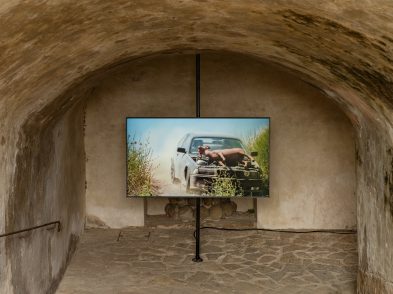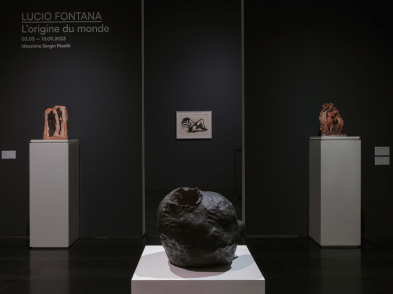Neapolitan painter Luca Giordano (1632–1705) was already famous by the time he reached Florence in 1682 to work for the Medici and the city’s richest families. He specialised in fresco painting and by the time of his departure in 1686 he had completed one of the finest ceiling decorations of the century, the Galleria at Palazzo Medici Riccardi. That masterpiece is at the centre of a major exhibition at the same palazzo that surveys the Florentine highpoints of the Baroque master who went on to become court painter of the Habsburg king of Spain.
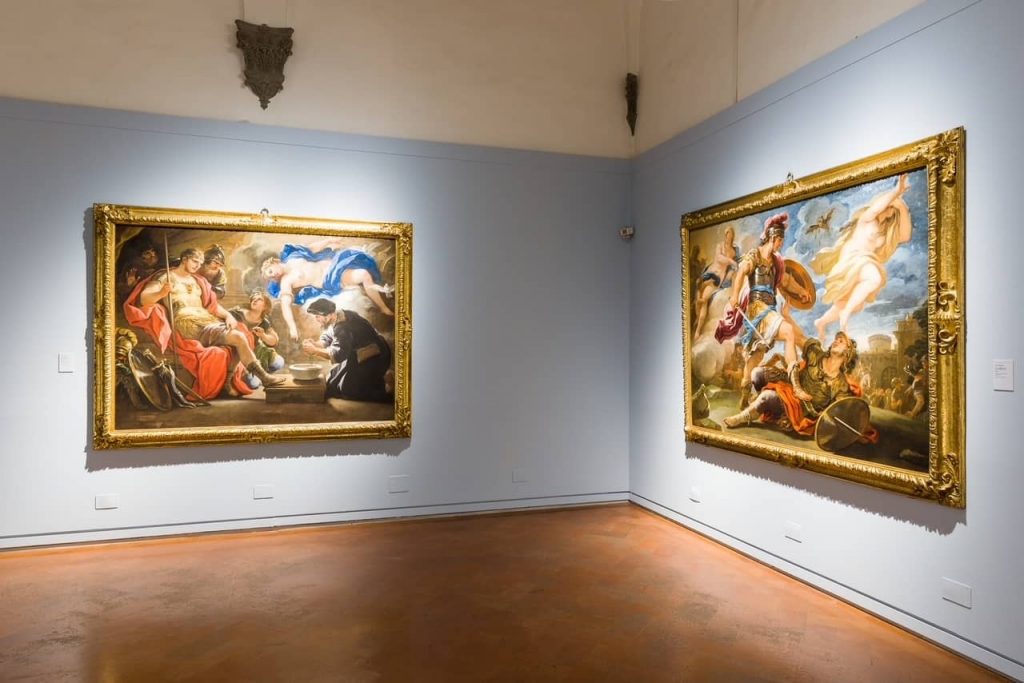
Before arriving in Florence, Giordano painted his portrait. Far from an exercise in self-flattery, the figure that looks out of the canvas at the visitor is soberly dressed, a down-to-earth, serious individual with a healthy complexion and fresh lips who is getting on with the job of scrutinising his own appearance, probably in a mirror. For that task, he needed his spectacles, and it is their dark, heavy frame, clasping the bridge of his nose, which steps out of the picture.
The portrait from 1680-82 suggests that Luca felt no need to mask his frailties, a confidence about himself and his place in the world that characterised all his painting. By this time, he was middle aged and based in Naples, where he had been born a painter’s son. He was already well established and prominent in the city’s artistic revival after the disastrous plague of 1656 that had wiped out half the city’s population. His father had observed his artistic talent early, placing him with Jusepe de Ribera, the Spanish painter whose entire career unfolded in Italy. Giordano trained as a Spanish artist because Naples was under Spanish rule. The dark palette, meticulous observation and dramatic lighting of his early work, such as the St Sebastian (c. 1665) included here, demonstrates the indelible impression made on the young man by his great teacher’s style.
Luca had already earned the nickname of “Fa Presto”. The origin might have been his father’s urging to work faster and earn more money, but the tag also encapsulated his endless motivation and rapid working method. He travelled to Rome, Florence and Venice in his youth and studied the methods of Titian, Veronese and, especially, Pietro da Cortona, artists whose example influenced his later vibrant colours and fluent, dynamic composition. He was also a master of drawing and completed numerous small works in oils. A later biographer recorded that, in the presence of the Grand Duke of Tuscany, Giordano executed one of these sketches in just four hours. Cosimo III liked it so much that he wanted it for himself.
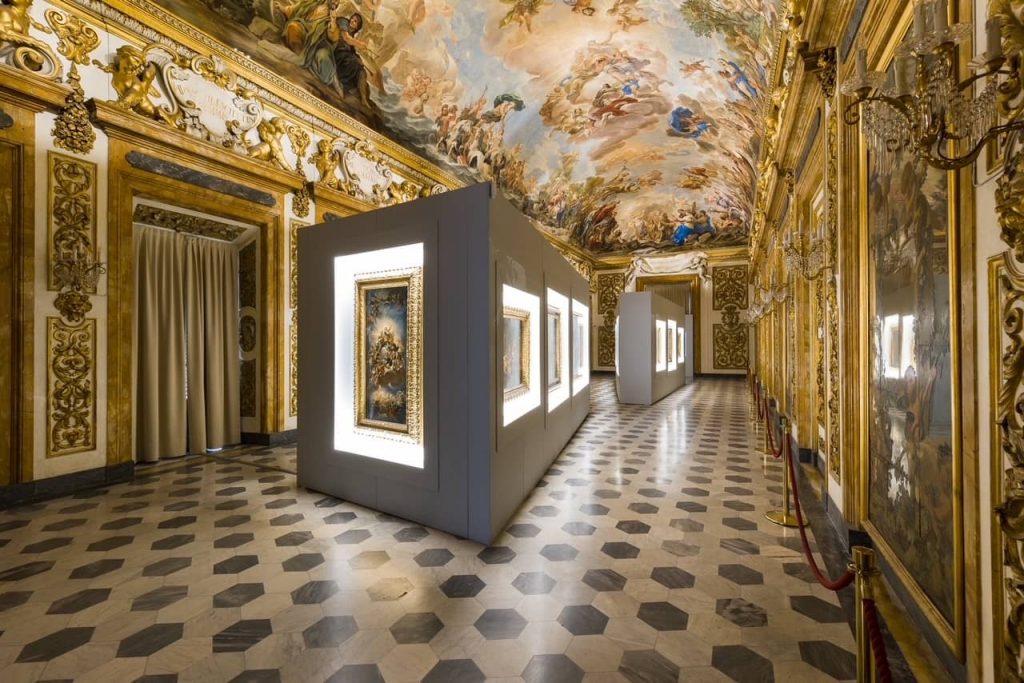
Indeed, it was a series of commissions for fresco cycles that brought him back to Florence in 1682. Cousins Bartolomeo and Neri Corsini requested a majestic fresco for the large dome of their family chapel in Santa Maria del Carmine to celebrate their ancestor, a former Carmelite bishop of Fiesole who had been canonised in 1629. Giordano devised a scheme with immense Baroque theatrical aplomb and sensitivity. The dome is populated by the saint and Holy Trinity with heavenly figures depicted in an astonishing variety of poses and expressions, a multitude that makes a constrained space appear much bigger. Naturally, the fresco has stayed in place, but Luca produced preparatory sketches as a way of jotting down ideas for frescoes. Three are in the show and display his virtuoso technique and luminous colours.
He had profound knowledge of religious themes and, by all accounts, was a devout Catholic. Historical subjects that called upon a masterful interpretation of the mythical were equally within his grasp. Several rooms celebrate his remarkable dexterity with themes on large canvases that his erudite circle of friends in Florence could interpret, whether it was Aeneas preparing to execute Turnus (c. 1685) derived from Virgil’s Aeneid, or The Triumph of Galatea (1682-85) from Ovid’s Metamorphoses, a popular source.
When his client, the Marquess Francesco Riccardi, commissioned the ceiling in the Palazzo Medici Riccardi, Giordano produced more oil sketches based on drawings to clarify his design. Changes were made as a result and this show makes comparison possible between these small, elegant modelli and the final frescoes since they are installed in the same room. The ten canvases loaned by the National Gallery in London still have the original carved and gilded frames made for them in Florence in the 1680s.
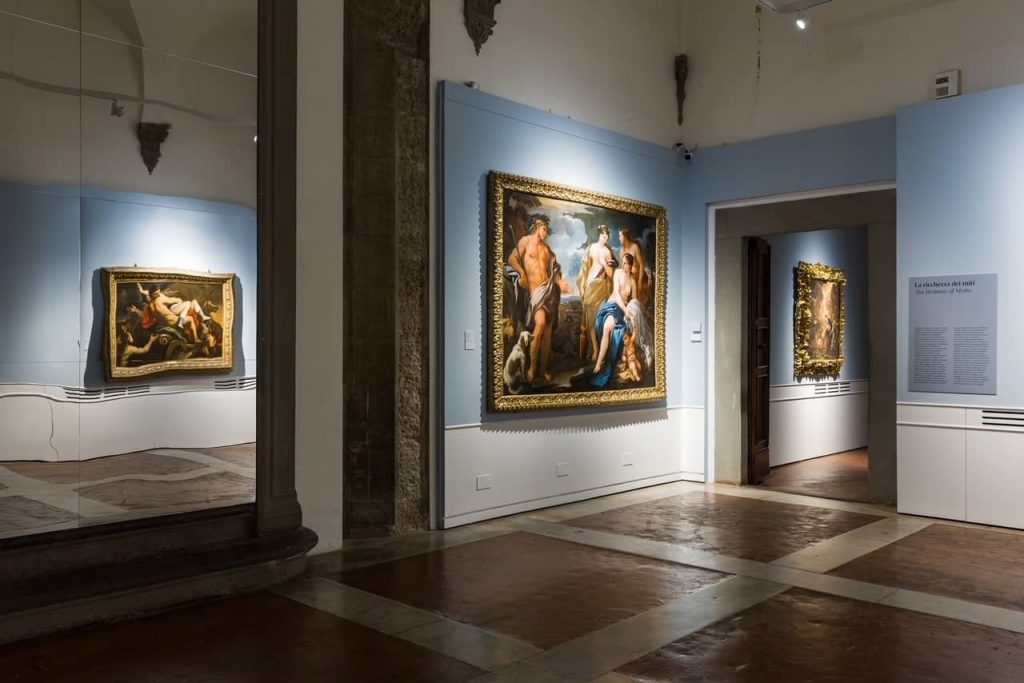
The palazzo had originally been built by Cosimo de’ Medici in the mid-fifteenth century. Bought in 1659 by the Riccardi, long-time Medici allies, the building was extended on the west side with the Galleria on the first floor. The room housed a precious collection of antiquities and served as a public reception room. So, the frescoes were meant to impress Florentine society and flatter the Medici, still the most powerful family in the city.
The overall theme for the long barrel-vaulted ceiling is the elevation of mankind through wisdom and virtue. The vast swirling expanse culminates in the central cloudburst, where the Medici family, the epitome of these qualities, shares the company of the gods on Mount Olympus. Giordano’s earlier study tours in Rome to see frescoes by Raphael and to Florence to study Cortona were invaluable for orchestrating his design, which would be lit by windows lining two sides of the room. Allegorical and mythological figures represent different strengths and traits with other themes woven into the visual narrative. Each group of events deserves to be savoured as one continuous space. Large areas are given over to blue sky, white clouds and verdant meadows to entice the viewer to walk slowly down each side, look up and then across to the other side. The ceiling is remarkable for its light-heartedness, visual brilliance and perceived transparency, as if the roof has been blown away into another world.
His work done, Luca returned to Naples before being called to Spain, where he stayed until February 1702 when, after a brief pause in Livorno, he settled back in Naples and remained extremely active. He died three years later, probably exhausted by the effort needed to produce so much work over a long career. His influence on contemporary painters in Italy’s main art centres was considerable, inspiring the Tiepolo family as well as Goya in Spain, and carrying Baroque ceiling decoration into the next century. A fast painter he might have been, but, as this show confirms, he was also truly remarkable.
Luca Giordano: Maestro Barocco a Firenze
Palazzo Medici Riccardi
Until September 5

